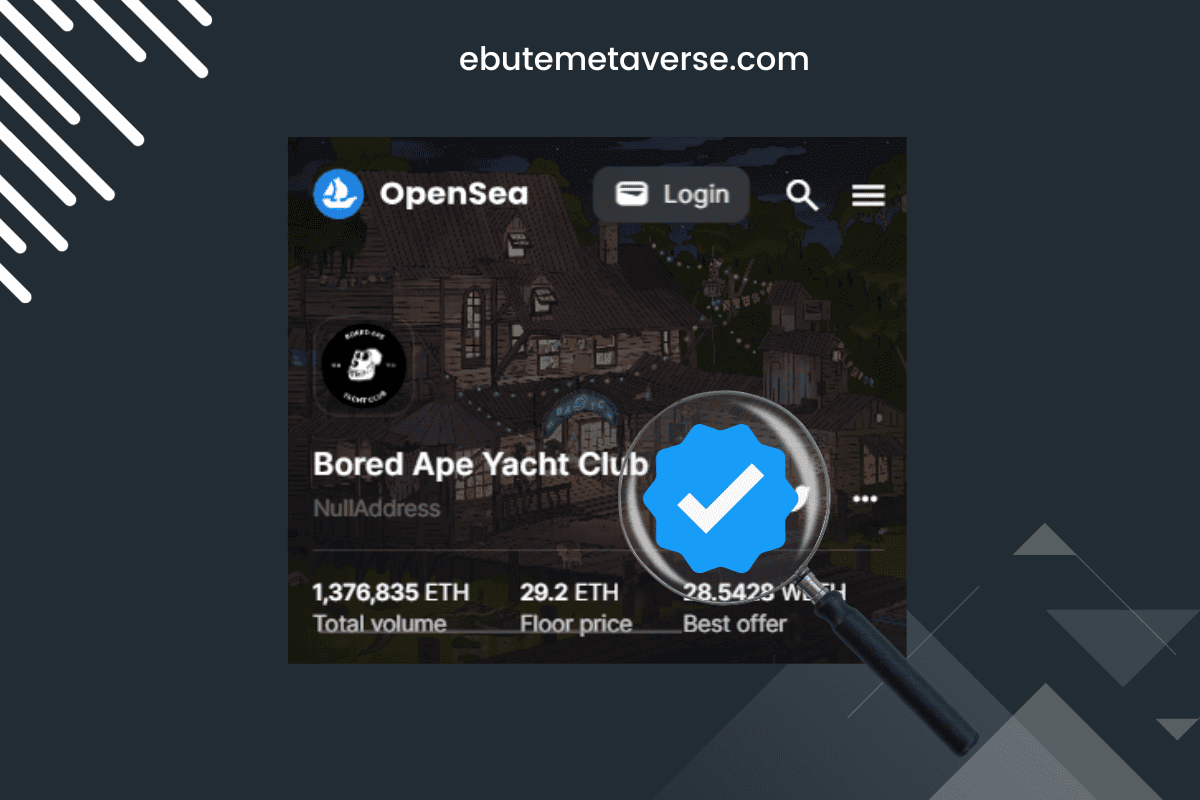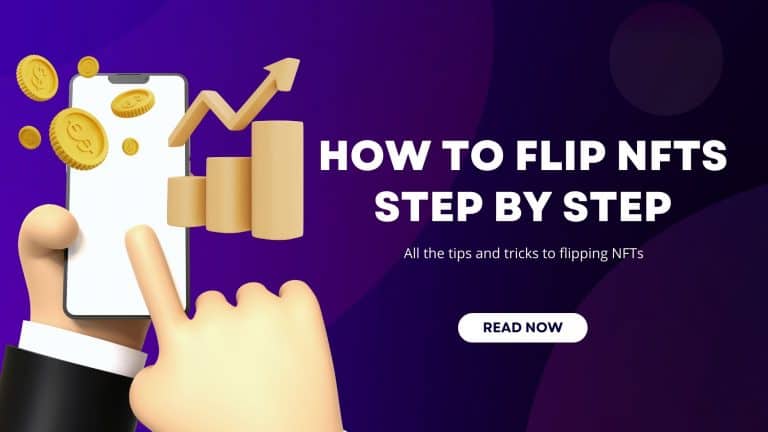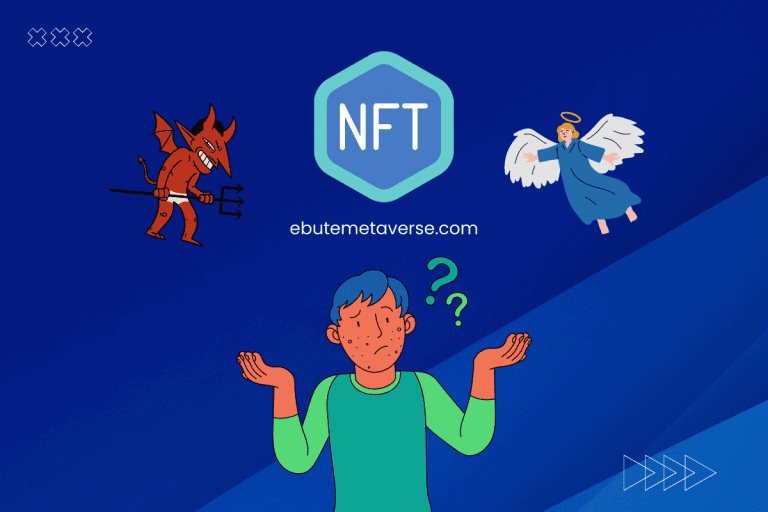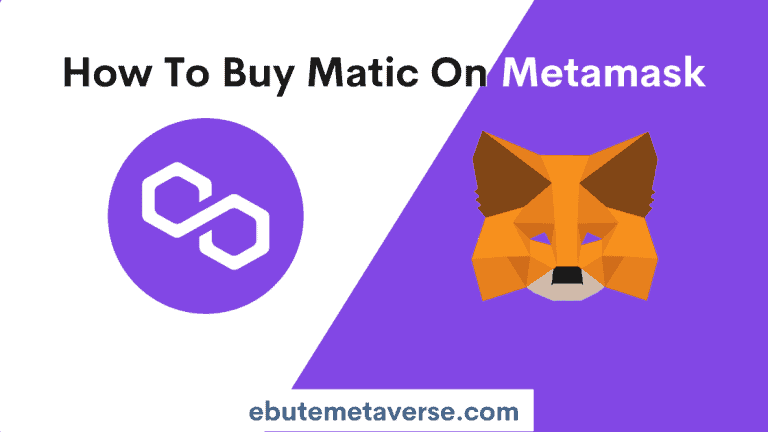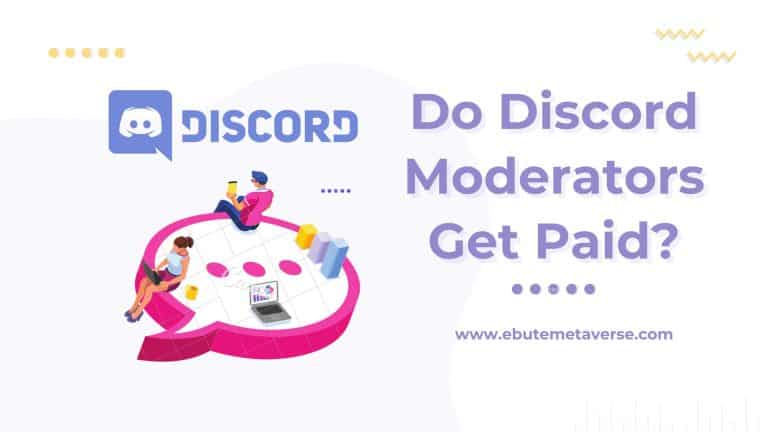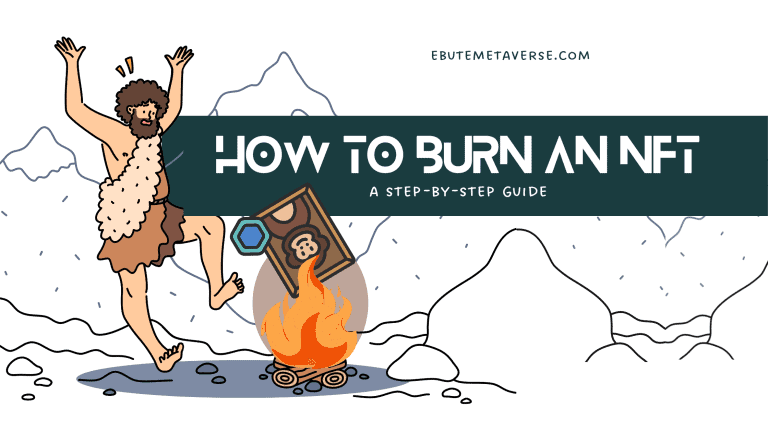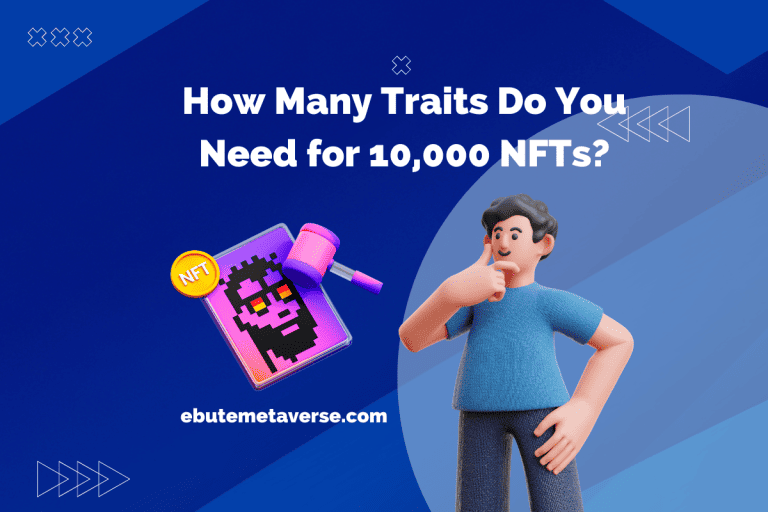Here’s How to Get Verified on OpenSea in 4 Steps
Getting verified on OpenSea, the largest NFT marketplace, has become an important milestone for many NFT creators and collectors. The blue verification badge gives credibility and legitimacy to accounts and projects in the NFT space.
In this comprehensive guide, we’ll cover everything you need to know about OpenSea verification, including:
Why Get Verified on OpenSea?
Here are some of the key benefits of getting the blue verification checkmark:
- Increased Trust and Legitimacy: The verification badge signals that OpenSea has reviewed your collection and deemed it authentic. This establishes legitimacy and helps build trust with potential buyers.
- More Exposure and Discoverability: Verified collections get additional exposure and discoverability within OpenSea. For example, they may be featured within the marketplace.
- Higher Valuations and Sales: According to OpenSea, verified collections tend to achieve higher average sale prices for items. The added legitimacy and exposure pays off.
- Stand Out Among Competition: With over 5 million NFTs on OpenSea and counting, standing out from the crowd is a challenge. Verification instantly makes your collection more visible.
Types of OpenSea Verification
There are two main types of verification on OpenSea:
- Account Verification: Individual accounts can get verified with a blue checkmark badge next to their profile name. This verifies the authenticity of the person behind the account.
- Collection Verification: NFT collections that meet certain criteria can get a verification badge to confirm their legitimacy.
The verification badge boosts trust in creators and projects in the NFT space, which is prone to scams and fake collections. It also gives verified accounts and collections increased visibility and prominence on OpenSea.
Now let’s dive into the specifics of qualification criteria and how to actually get verified.
OpenSea Account Verification Eligibility
OpenSea has published baseline eligibility criteria for individual accounts to get verified on the platform:
- Have bought or sold at least 1 NFT on OpenSea in the last 3 months
- Have a profile picture and banner configured on your account
- Have an email address associated with your account
- Have not previously violated OpenSea’s Terms of Service
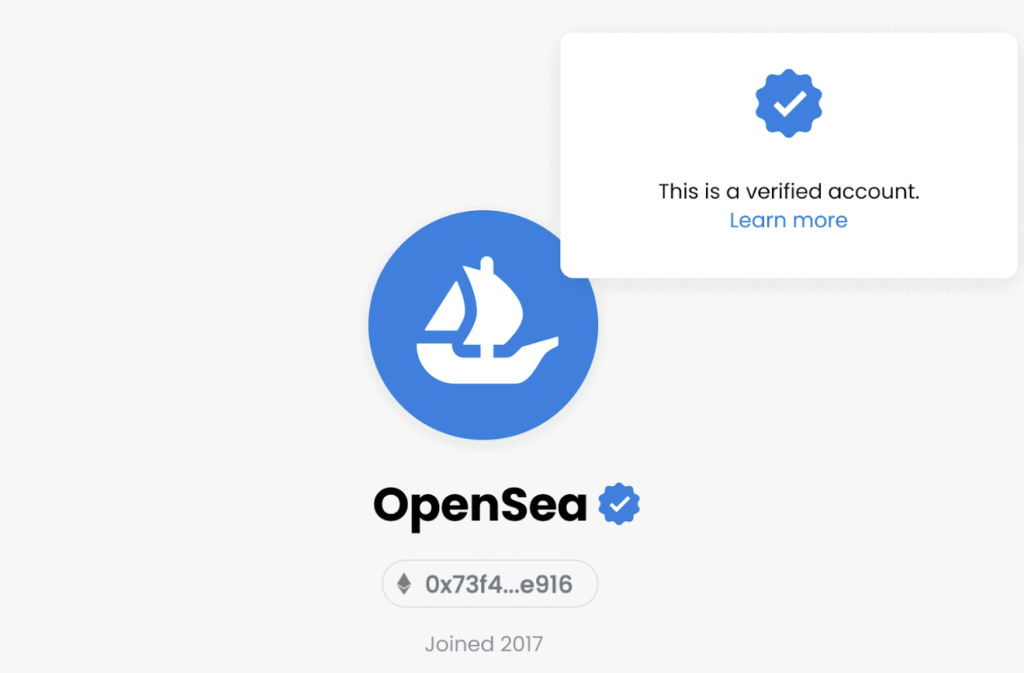
Meeting these requirements makes your account eligible for review by OpenSea to potentially receive account verification.
Additional criteria that help in getting verified:
- Created by or associated with a public figure, celebrity, artist, or reputable organization
- Technological, artistic, or social contributions with significant real-world impact
- Already verified on major social media platforms like Twitter or Instagram
- Severe fraud risk that urgently requires verification
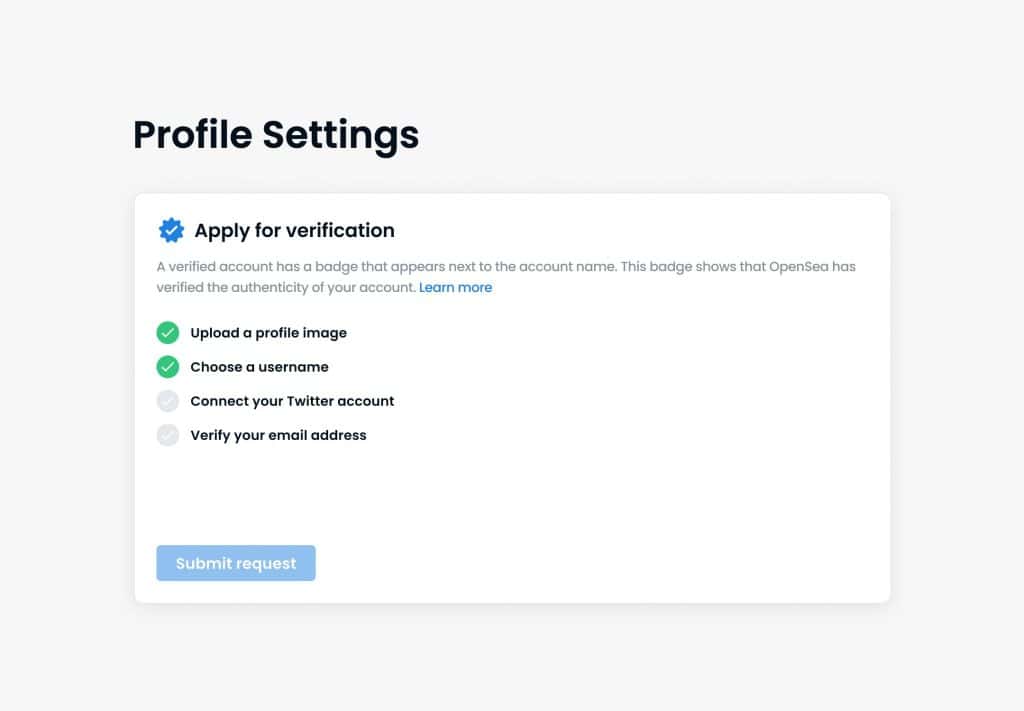
💡In May 2022, OpenSea introduced one concrete pathway to verification: any account with >100 ETH in trading volume on OpenSea will get invited to apply for verification.
OpenSea Collection Verification Eligibility
For NFT collections to receive verification, here are OpenSea’s current baseline criteria:
- Created by an already verified high-profile individual or brand
- Has a name, logo, banner, and connected Twitter, Instagram, or Discord account.
- Reach 100 ETH+ in trading volume with items revealed on OpenSea
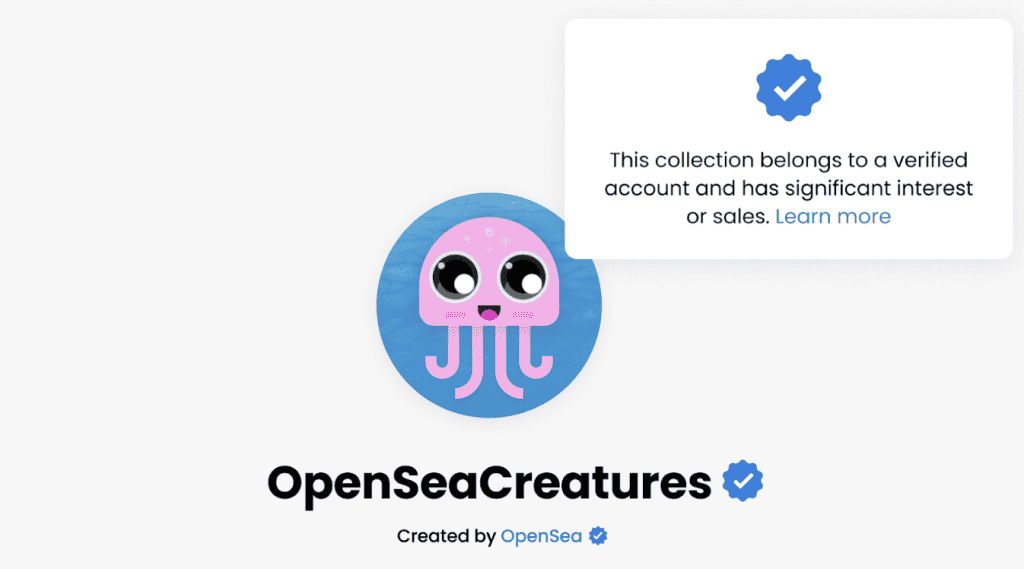
Additional requirements when applying:
- The collection must comply with OpenSea’s community guidelines
- Be ready to provide additional confirmation of authenticity like draft files, contact information, etc.
Homages, remixes, and spin-offs of existing projects don’t qualify yet to avoid potential confusion. The goal is to expand eligibility to more authentic creator collections over time.

💡In May 2022, OpenSea updated collection verification—any collection owned by a verified account AND with >100 ETH volume can get verified.
How to Get Verified on OpenSea Step-By-Step
If your collection meets the above criteria, here is the step-by-step process to apply and hopefully earn the verification badge:
Step 1: Request Verification
Once your collection passes 100 ETH in volume, OpenSea will email you, inviting you to request verification. Alternatively, reach out directly to request a review. Be ready to supply the required proof documents.
Step 2: Complete Onboarding Form
OpenSea will ask you to complete an onboarding form requesting collection details like descriptions, links, images, and authenticity documents. Supply as much helpful information as possible.
Step 3: OpenSea Review
The OpenSea team manually reviews every verification request, double-checking the provided information and on-chain data. This can take up to 1–2 weeks.
Step 4: Celebrate Verification
If successful, OpenSea will place the coveted blue “Verified Collection” checkmark next to your collection name. Congratulations! Leverage it to promote your NFTs.
Tips to Improve Your Chances of Getting Verified
Here are some tips that can help your verification application succeed:
- Highlight notable owners: Call attention to any big-name collectors or celebrities who own your NFTs. Proven demand is key.
- Share Press Mentions: Links to any press articles or features can demonstrate the broader awareness and legitimacy that OpenSea looks for.
- Be transparent with data: Share on-chain data transparently showing total mints matching announced supplies. This verifies authenticity.
- Personal Outreach: Consider directly reaching out to OpenSea via Twitter or other channels if you have a strong case after 2 weeks. The squeaky wheel gets the grease!
What To Do After Verification
Once you get the coveted OpenSea blue checkmark on your account or collection, here are some ideas to capitalize on it:
Promote It Across Social Channels
Let your community know by announcing it on Twitter, Discord, and other social platforms. Display the badge proudly.
Read More: Where Can I Promote My NFT for Free?
Call It Out Prominently On Your Site
Add the verified badge image to your collection’s home site either next to the logo or on the main header image.
Craft a Press Release
Getting verified is itself newsworthy for niche NFT publications. Write a brief press release and use the added credibility to get featured.
Consider Raising Your Floor
Read More: How to Sell Out Your NFT Collection
With legitimacy firmly established, consider increasing your collection’s floor price. Buyers should have more confidence in paying a premium.
Add Value and Utility
Continue enhancing your collection with new traits, metadata, roadmaps, or utilities. The work does not stop with verification!
Read More: 15 NFT Utility Ideas to Wow Your Community
Reasons for Losing OpenSea Verification
Accounts and collections can have verification status revoked if they no longer meet standards, such as:
- Participating in manipulative trading behavior like wash trading
- Letting someone else use the account for unethical practices
- Losing account access/ownership leading to breach of trust
- Using copyrighted content without authorization
- Failure to adhere to community guidelines
- Significantly dropping activity and involvement
⚠️ Basically, violating OpenSea terms and eligibility criteria. Prevention is the only way to avoid losing verification—continue meeting the high standards expected of you by the community.
Getting Verified on OpenSea Recap

Becoming a verified account or collection on OpenSea brings a host of benefits to establish legitimacy, increase exposure, elicit higher sales, and stand out from the NFT masses.
Through meeting key eligibility requirements, completing the application process diligently, and leveraging the badge post-verification, your collection can convert the prestigious blue checkmark into tangible success.
Use this comprehensive guide as your playbook for the entire journey to OpenSea verification!

